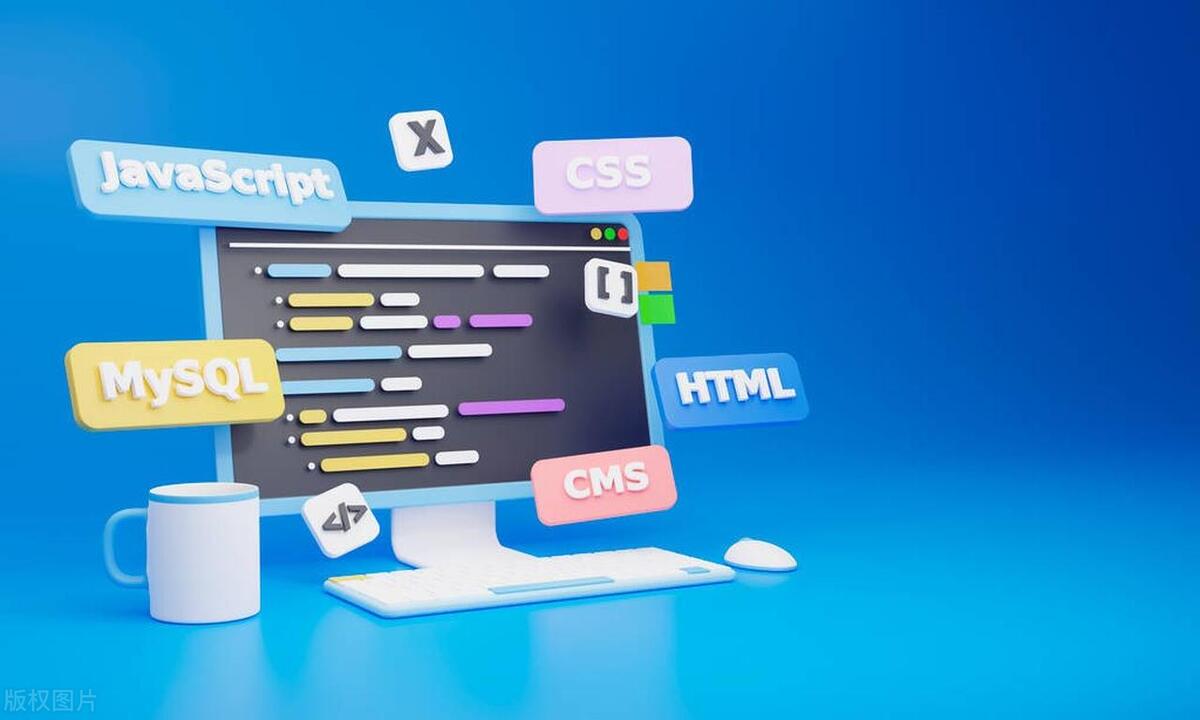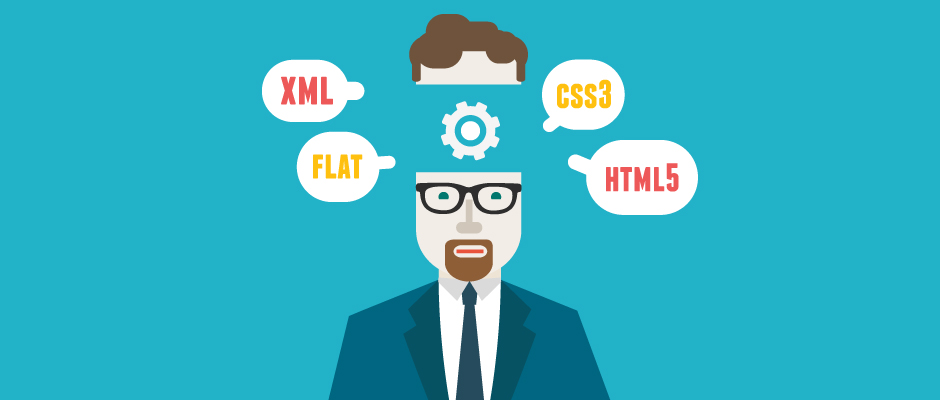Three.js is a 3D graphics library based on WebGL encapsulation, suitable for quickly building interactive 3D scenes. 1. To create a basic scene, you need to introduce Three.js and initialize Scene, Camera and Renderer; 2. Add geometric objects such as cubes and set the camera position; 3. Use OrbitControls to achieve interactive operations; 4. Use requestAnimationFrame to achieve animation effects; 5. Use loaders such as GLTFLoader to load external models and pay attention to adaptation and optimization; 6. When deploying, cross-domain, responsive design and mobile adaptation issues must be handled. Mastering these core steps further explore advanced features.

WebGL and Three.js are common tools for implementing 3D graphics display in modern front-end development. Three.js is based on WebGL encapsulation, reducing the complexity of using WebGL directly, and is suitable for quickly building interactive 3D scenarios. Three.js is a useful choice if you plan to include 3D models, animations, or visualizations in your web page.

Create a basic scenario: Start with "visible"
The first step in developing with Three.js is to build a basic scenario where you can see the content. You need to introduce the Three.js library (can be installed via CDN or npm), and then create the scene (Scene), the camera (Camera), and the renderer (Renderer).
const scene = new THREE.Scene(); const camera = new THREE.PerspectiveCamera(75, window.innerWidth / window.innerHeight, 0.1, 1000); const renderer = new THREE.WebGLRenderer(); renderer.setSize(window.innerWidth, window.innerHeight); document.body.appendChild(renderer.domElement);
This code creates a blank scene and inserts the renderer into the page. Then you can add geometry, materials, light sources and other elements to enrich the picture. For example, add a simple cube:

const geometry = new THREE.BoxGeometry();
const material = new THREE.MeshBasicMaterial({ color: 0x00ff00 });
const cube = new THREE.Mesh(geometry, material);
scene.add(cube);
camera.position.z = 5; Finally, remember to call renderer.render(scene, camera) in the loop to continuously render the picture.
Add interaction and animation: Make the screen move
The static 3D scene is intuitive, but lacks appeal. You can increase interactivity by listening to user input (such as mouse drag, scroll wheel zoom) or automatic rotation.

A common practice is to use the OrbitControls plugin, which allows you to easily rotate, zoom, and pan around objects:
Introducing OrbitControls:
import { OrbitControls } from 'three/addons/controls/OrbitControls.js';Initialize and bind the DOM elements of the camera and renderer:
const controls = new OrbitControls(camera, renderer.domElement);
In terms of animation, you can use requestAnimationFrame to loop to update the object state, such as making the cube rotate continuously:
function animate() {
requestAnimationFrame(animate);
cube.rotation.x = 0.01;
cube.rotation.y = 0.01;
renderer.render(scene, camera);
}
animate();This way you can see a green cube that rotates continuously.
Loading model and optimization performance: closer to real projects
In actual projects, we often do not manually create complex geometry, but load external model files, such as GLTF, OBJ, FBX and other formats. Three.js provides multiple loaders to support these formats:
import { GLTFLoader } from 'three/addons/loaders/GLTFLoader.js';
const loader = new GLTFLoader();
loader.load('path/to/model.gltf', (gltf) => {
scene.add(gltf.scene);
});The following points should be paid attention to when loading the model:
- Model size adaptation : After importing, you may need to adjust the position and scaling.
- Texture path problem : Ensure that the map resources that the model depends on are loaded correctly.
- Performance optimization : Large models may cause page stuttering, and it is recommended to compress the model or use Draco compression format.
In addition, in order to improve the user experience, you can also add a loading progress bar or placeholder animation to let the user know that it is loading.
Deployment compatibility with cross-platform: Don't ignore details
After completing development, some common issues should be paid attention to when deploying to an online environment:
- Cross-domain restrictions : Loading local model files may experience CORS errors, and it is best to deploy on the server.
- Responsive design : When the window size changes, update the camera scale and renderer size:
window.addEventListener('resize', () => { camera.aspect = window.innerWidth / window.innerHeight; camera.updateProjectionMatrix(); renderer.setSize(window.innerWidth, window.innerHeight); }); - Mobile adaptation : Touch control is more complex than mouse. OrbitControls already supports basic gestures, but it still needs to test performance on different devices.
Basically that's it. After mastering these core points, you can try more advanced functions, such as post-processing, physics engine integration, particle systems, etc. The whole process is not complicated, but some details are easy to ignore. Planning the structure and resource management in advance will make you achieve twice the result with half the effort.
The above is the detailed content of Frontend Development with WebGL and Three.js. For more information, please follow other related articles on the PHP Chinese website!

Hot AI Tools

Undress AI Tool
Undress images for free

Undresser.AI Undress
AI-powered app for creating realistic nude photos

AI Clothes Remover
Online AI tool for removing clothes from photos.

Clothoff.io
AI clothes remover

Video Face Swap
Swap faces in any video effortlessly with our completely free AI face swap tool!

Hot Article

Hot Tools

Notepad++7.3.1
Easy-to-use and free code editor

SublimeText3 Chinese version
Chinese version, very easy to use

Zend Studio 13.0.1
Powerful PHP integrated development environment

Dreamweaver CS6
Visual web development tools

SublimeText3 Mac version
God-level code editing software (SublimeText3)
 How does React handle focus management and accessibility?
Jul 08, 2025 am 02:34 AM
How does React handle focus management and accessibility?
Jul 08, 2025 am 02:34 AM
React itself does not directly manage focus or accessibility, but provides tools to effectively deal with these issues. 1. Use Refs to programmatically manage focus, such as setting element focus through useRef; 2. Use ARIA attributes to improve accessibility, such as defining the structure and state of tab components; 3. Pay attention to keyboard navigation to ensure that the focus logic in components such as modal boxes is clear; 4. Try to use native HTML elements to reduce the workload and error risk of custom implementation; 5. React assists accessibility by controlling the DOM and adding ARIA attributes, but the correct use still depends on developers.
 A Deep Dive into WebAssembly (WASM) for Front-End Developers
Jul 27, 2025 am 12:32 AM
A Deep Dive into WebAssembly (WASM) for Front-End Developers
Jul 27, 2025 am 12:32 AM
WebAssembly(WASM)isagame-changerforfront-enddevelopersseekinghigh-performancewebapplications.1.WASMisabinaryinstructionformatthatrunsatnear-nativespeed,enablinglanguageslikeRust,C ,andGotoexecuteinthebrowser.2.ItcomplementsJavaScriptratherthanreplac
 Server-Side Rendering with Next.js Explained
Jul 23, 2025 am 01:39 AM
Server-Side Rendering with Next.js Explained
Jul 23, 2025 am 01:39 AM
Server-siderendering(SSR)inNext.jsgeneratesHTMLontheserverforeachrequest,improvingperformanceandSEO.1.SSRisidealfordynamiccontentthatchangesfrequently,suchasuserdashboards.2.ItusesgetServerSidePropstofetchdataperrequestandpassittothecomponent.3.UseSS
 How to manage component state using immutable updates in React?
Jul 10, 2025 pm 12:57 PM
How to manage component state using immutable updates in React?
Jul 10, 2025 pm 12:57 PM
Immutable updates are crucial in React because it ensures that state changes can be detected correctly, triggering component re-rendering and avoiding side effects. Directly modifying state, such as push or assignment, will cause React to be unable to detect changes. The correct way to do this is to create new objects instead of old objects, such as updating an array or object using the expand operator. For nested structures, you need to copy layer by layer and modify only the target part, such as using multiple expansion operators to deal with deep attributes. Common operations include updating array elements with maps, deleting elements with filters, adding elements with slices or expansion. Tool libraries such as Immer can simplify the process, allowing "seemingly" to modify the original state but generate new copies, but increase project complexity. Key tips include each
 Security Headers for Frontend Applications
Jul 18, 2025 am 03:30 AM
Security Headers for Frontend Applications
Jul 18, 2025 am 03:30 AM
Front-end applications should set security headers to improve security, including: 1. Configure basic security headers such as CSP to prevent XSS, X-Content-Type-Options to prevent MIME guessing, X-Frame-Options to prevent click hijacking, X-XSS-Protection to disable old filters, HSTS to force HTTPS; 2. CSP settings should avoid using unsafe-inline and unsafe-eval, use nonce or hash and enable reporting mode testing; 3. HTTPS-related headers include HSTS automatic upgrade request and Referrer-Policy to control Referer; 4. Other recommended headers such as Permis
 What are custom data attributes (data-*)?
Jul 10, 2025 pm 01:27 PM
What are custom data attributes (data-*)?
Jul 10, 2025 pm 01:27 PM
The data-* attribute is used in HTML to store additional data, and its advantages include that the data is closely related to elements and comply with HTML5 standards. 1. When using it, name it starts with data-, such as data-product-id; 2. It can be accessed through JavaScript's getAttribute or dataset; 3. Best practices include avoiding sensitive information, reasonable naming, paying attention to performance and not replacing state management.
 Applying CSS Styles to Scalable Vector Graphics (SVG)
Jul 10, 2025 am 11:47 AM
Applying CSS Styles to Scalable Vector Graphics (SVG)
Jul 10, 2025 am 11:47 AM
To style SVGs using CSS, you first need to embed SVGs inline into HTML for fine control. 1. Inline SVG allows its internal elements such as or to be directly selected through CSS and to apply styles, while external SVG only supports global styles such as width and height or filters. 2. Use regular CSS syntax such as .class:hover to achieve interactive effects, but use fill instead of color to control the color, and use stroke and stroke-width to control the outline. 3. Use class names to organize styles to avoid duplication and pay attention to naming conflicts and scope management. 4. The SVG style may be inherited from the page, and can be reset through svg*{fill:none;stroke:none;} to avoid
 How to add a favicon to a website?
Jul 09, 2025 am 02:21 AM
How to add a favicon to a website?
Jul 09, 2025 am 02:21 AM
Adding website Favicon requires preparing icon files, placing the correct path and quoting them. 1. Prepare multi-size .ico or .png icons, which can be generated by online tools; 2. Put favicon.ico in the website root directory; 3. If you need to customize the path or support more devices, you need to add a link tag reference in the HTMLhead; 4. Clear the cache or use the tool to check whether it is effective.






